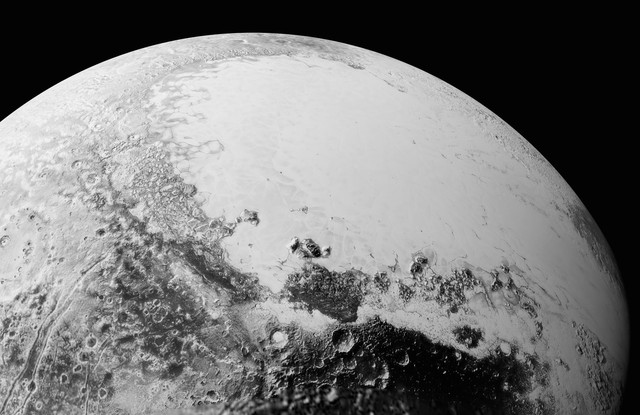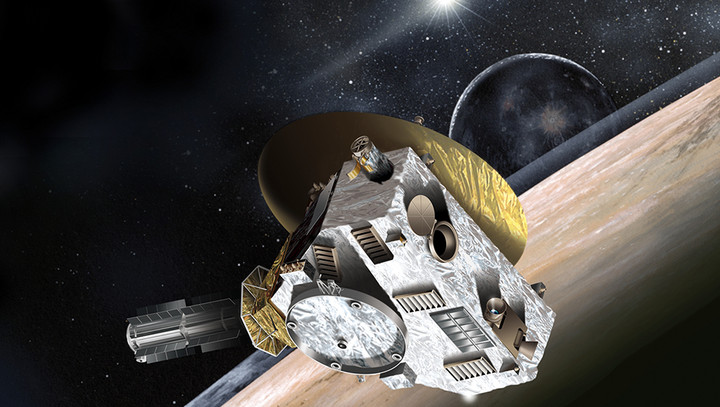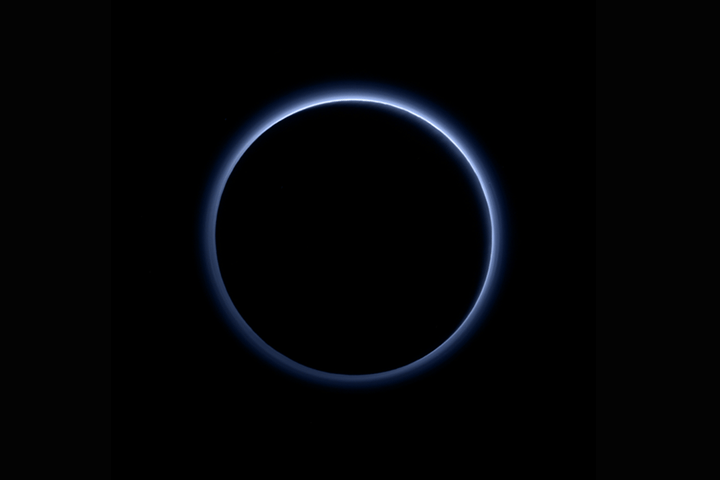Pluto is apparently emitting X-rays and that has us
questioning everything again

Pluto, everyoneís favorite dwarf planet, is acting a little strange
and may once again be challenging our current understanding of the solar
system. Scientists have noticed the tiny trans-Neptunium object emitting
X-rays, which, if it is confirmed, is both a baffling and exciting
discovery.
Related: Could
there be oceans of liquid water lurking beneath Plutoís surface?
Astronomers say yes
Carey Lisse and Ralph McNutt from Johns Hopkins University Applied
Physics Laboratory and a team of colleagues detected the X-rays by
pointing the Chandra X-Ray Obervatory telescope in Plutoís direction
four different times between February 2014 and August 2015. Seven
photons of X-ray light were detected during these observations,
confirming the teamís hypothesis that the dwarf planet is detectable on
the X-ray spectrum, potentially due to the presence of an atmosphere.
Their findings have been published in the scientific journal, Icarus.
Why is this such a big deal? First of all, it would challenge what
scientists have previously believed to be true of Plutoís nature. Until
now, the popular description of the dwarf planet is as a tiny ball of
frozen rock slowly meandering around the sun some 3.6-billion miles
away.
The recent fly-by done by the New Horizons space probe began to call
this idea of Pluto into question, as data from the spacecraftís approach
of the dwarf planet indicated the presence of an atmosphere. That
atmosphere is likely a result of Plutoís icy surfaces slowly melting
when it is closer to the sun along certain points of its orbit. The
loose atmosphere then trails from Pluto, much like a cometís tail.
|
One of the possible explanations for why Pluto is emanating X-rays would be
that the high energy particles emitted by the sun are stripping away and
reacting with Plutoís atmosphere, producing the X-rays that are visible to
Chandra. Such interactions have been witnessed in the interaction between the
sunís high-energy particles and the cold material that trails off of comets, but
this would mark the first time an object past Saturn was visible on the X-ray
spectrum. It also makes sense given that Pluto, like many comets, is part of the
Kuiper Belt and produces a tail.
So, instead of just being a frozen, dead orb floating beyond Neptune, Pluto
might actually be a frozen, dead orb that is being very slowly boiled
away by solar winds like a giant comet.
Related: A
few million years from now, Mars could develop Saturn-like rings
There are other potential explanations, such as haze particles in Plutoís
atmosphere scattering the sunís X-rays are possible, though unlikely given the
temperature of the X-rays observed. It is also possible that these X-rays
are actually bright auroras produced by the atmosphere, but that would require
Pluto to have a magnetic field ó something that would have been detected during
New Horizonís flyby, yet no evidence of one was found.

Artistís rendition of New Horizons as it passed Pluto.
The other aspect of this discovery that could bring about major changes to
the way we see the universe is how we might now explain all that background
X-ray radiation scientists are always observing. Instead of background X-rays
simply being a characteristic of the universe, it is possible that some of that
radiation ó or even all of it ó is a result of similar interactions
happening throughout the universe.
In a way, it seems like poetic justice that the little once-planet of Pluto
continues to be the very thing that challenges our classifications and beliefs
about the way the universe works.


